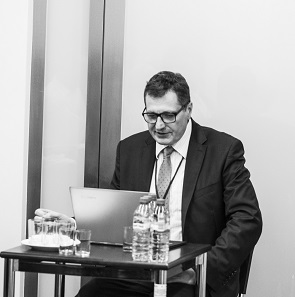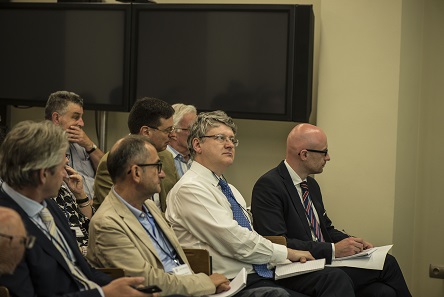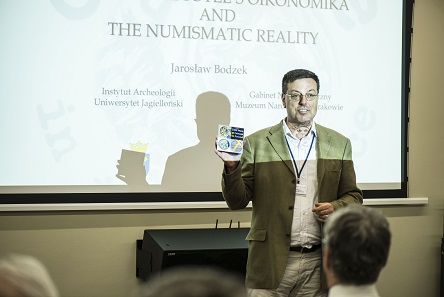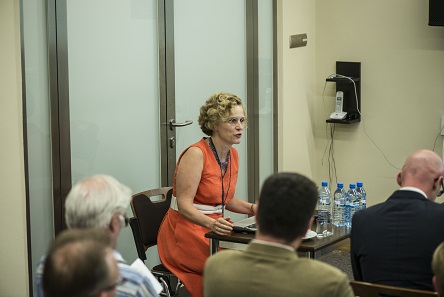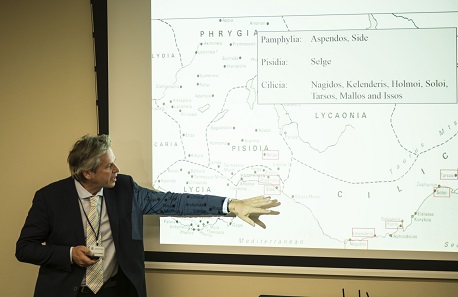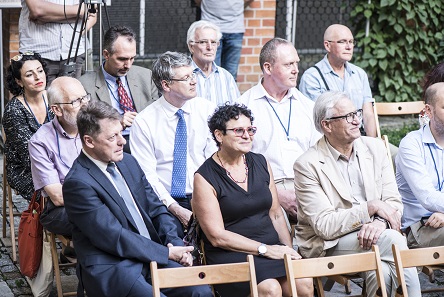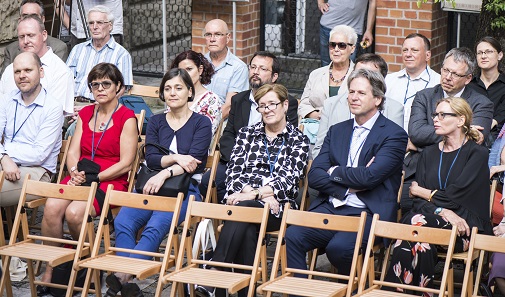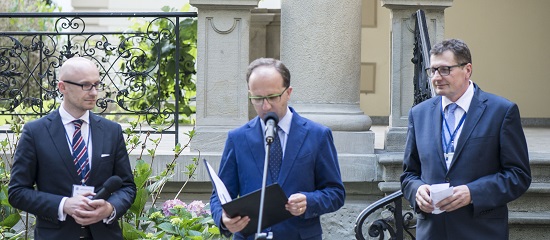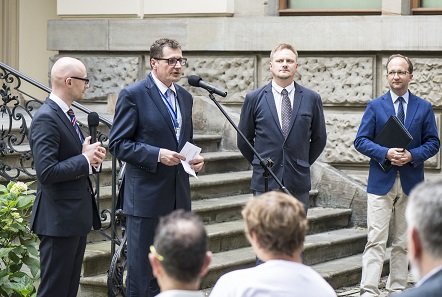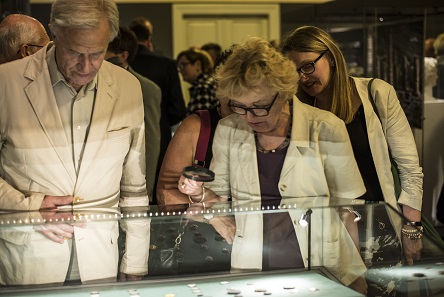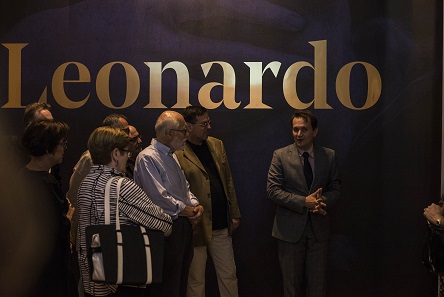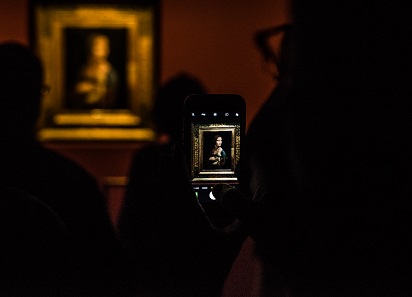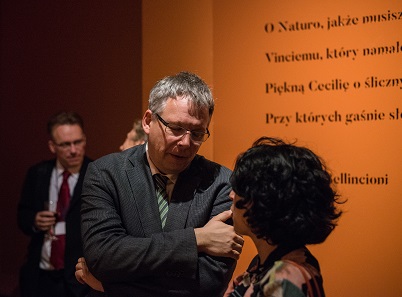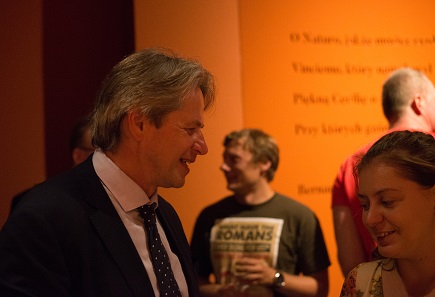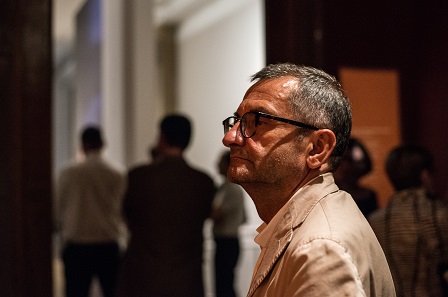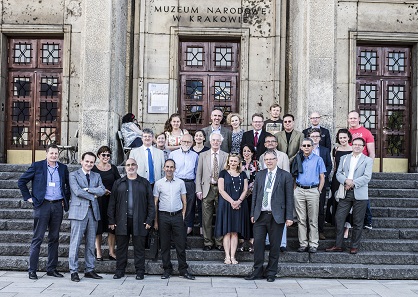by the conference organizers
August 3, 2017 – The numismatic conference “Coinage in Imperial Space. Continuity or change from the Achaemenid to Hellenistic kingdoms?” was held in Krakow (Poland) between 28th June and 2nd July 2017. The event organised by the Institute of Archaeology, Jagiellonian University, the National Museum in Krakow and the University of Oxford attracted more than 40 top specialists and enthusiasts of numismatics who gathered in the Emeryk Hutten-Czapski Palace, which is the location of the Coin Cabinet, a branch of the National Museum in Krakow. This ambitious scientific project was conjoined with another cultural event – opening of exhibition entitled “Coin and Empire. From the Achaemenid Empire to the Hellenistic Kingdoms”, presenting the Achaemenid and Greek coins from the collections of the National Museum in Krakow, National Museum in Warsaw and other Polish public institutions as well as private collections.
International experts (together with extremely engaged audience) investigated and discussed the transition from the monetary practices of the Persian Empire to those of the Macedonian Successor Kingdoms. The point of departure was the second book of the pseudo-Aristotelian “Oikonomika”, which famously divides economies into four types: Royal (basilike), Satrapal (satrapike), Civic (politike) and Personal (idiotike). As a theoretical examination of the nature of economies in the ancient Greek world this treatise is all but unique. The administration of coinage, for its author belongs solely in the realm of the King – this presupposition has been raising a number of questions which scholars specializing in the coinage of particular regions of Greece, Egypt, Near East and beyond as well as economic history aimed to tackle. The number of 22 speakers presented top quality papers. Here, you will find a brief report combined with a photo story of the conference, which would be not possible to organise if not the generous support of the Künker Auction House, International Association of Professional Numismatists (IAPN) and the Warszawskie Centrum Numizmatyczne (Warsaw Numismatic Centre).
On 28th June, in the afternoon, we have opened the registration for the speakers and conference’s participants.
The conference was officially opened on 29th June at 9.15 a.m. by the organisers of the event: Jaroslaw Bodzek (Jagiellonian Uniwersity in Krakow) and Andrew Meadows (University of Oxford).
The first session (chaired by Michael Alram, the President of the International Numismatic Council) included three papers devoted to the Achaemenid coinage.
The opening lecture, entitled “Coinage in Imperial Space: Control, Convention or Chaos?” was delivered by Andrew Meadows. The author introduced the questions proposed by the conference, namely: Who controlled coinage in the Imperial Space of the Achaemenid empire? Is all coinage what it purports to be? Is/are there any established mechanisms for the overall regulation of monetary activity in regional or supraregional spaces within the Empire? Does it make any sense to talk of an imperial space in monetary terms? How does this change with the arrival of Alexander the Great? This thought-provoking and well-prepared contribution met a lively discussion – a phenomenon that followed each next paper.
The second speaker in this session was Wolfgang Fischer-Bossert from the Austrian Academy of Sciences. His lecture entitled “The Royal Lydian Coinage before Croesus: Walwet and Kukalim” was an intriguing die-study of the epigraphic group of early Lydian coins and addressed the relevant problems such as whether the chronological order of the coins attributed to the kings Alyattes and Gyges should be challenged or not.
The third speaker, Christopher Tuplin (University of Liverpool) explored the peculiarity of darics, the oddity of some of the rare numismatic appearances of the winged disk figure, the significance of staters at Ain Manawir and the exceptional Persianism of fourth century Samarian coinage.
Both, the second and the third talks have risen fruitful discussions engaging the audience that had to be limited due to the conference schedule. But the discussions were eagerly continued during the coffee break that finished shortly before noon.
During the second session (chaired by Wolfgang Fischer-Bossert), the speakers continued to explore monetary systems of the Achaemenid Empire.
First to speak this time was Jaroslaw Bodzek, whose talk titled as “King, Satraps, Local Dynasts and Cities in Achaemenid Imperial Space – Pseudo Aristotle’s Oikonomika and the Numismatic Reality” was an exciting analysis of the numismatic material showing that the minting activities within the Achaemenid Empire were of a complex nature. The differentiation between some local coin systems and administrations were due to the pre-Achaemenid times. This paper aimed to examine non-royal coinages with emphasis on the coins of satraps and to recognise their position within the Achaemenid Imperial space.
The second talk within this session was delivered by Ute Wartenberg Kagan (Executive Director of the American Numismatic Society) and entitled “A New Persian Coinage of the Archaic and Classical Period”. She discussed the well-known Classical silver coins of Sinope (eagle head/incuse punch) and presented arguments for the hypothesis that this series was not minted in the Milesian colony on the Black Sea but is instead a coinage issued by the satrapy of Daskyleion. Examining both, the archaeological and historical data, and the coinage itself, she made clear that the rather arbitrary 19th century attribution must be revised.
The final speaker before lunch was Bernhard Weisser, the Director of the Münzkabinett, Staatliche Museen zu Berlin, who presented the paper entitled: “The Hoard of Demanhur and the Persian Empire. Remarks on Late Archaic and Early Classic Coinage”. His talk gave an overview of the hoard of Demanhur and presented a reconstruction of its historical context pointing to the question whether it represents part of the coin circulation of the Persian Empire in late archaic and early classical times or not; if yes, how does it fit in?
Each of the speakers attracted the audience greatly firing discussions over more and less specific issues that were continued during the lunch served in the café and charming garden of the Józef Czapski Pavilon located near to the Emeryk Hutten-Czapski Museum.
The third and last session planned for this day was chaired by Ute Wartenberg Kagan. As the first, her lecture presented Selene E. Psoma (University of Athens). The study entitled “The SYN (symmachikon) Coinage of the Classical Period. Agesilaus versus Lysander” concerned the silver coins of Chian weight minted by Byzantion, Kyzikos, Samos, Ephesos, Rhodes, Iasos and Knidos, the gold coins of the weight of a Daric of Lampsakos, and the Cyzicene electron hecte which were all issued with the same obverse type – baby Herakles killing the snakes. In short, in this dense paper the author reviewed the attributions of the coinages by examination of the evidence for Lysander’s and Agesilaus’ finances, as well as Agesilaus’ relations with his allies in Asia Minor and with the cities that issued the SYN coinage as well as re-examined the obverse type of coinage in the historical context of the war which ended with the Peace of Antalkidas.
Further, François de Callatay (Bibliothèque royale de Belgique) stepped on the rostrum presenting his talk: “Not civic but imperial: the abundant silver coinages in the name of Pamphylian and Cilician cities (c. 450-333 BC)”. He successfully brought about the audience to the concept that the coinages of several cities located along the Southern Anatolian seashore (Aspendos and Side in Pamphylia, Selge in Pisidia, Nagidos, Kelenderis, Holmoi, Soloi, Tarsos, Mallos and Issos in Cilicia) were minted due to the military purposes of the Persians rather than civic (trade) necessities.
Finally, the last speaker of the day was Frédérique Duyrat, the Director of the Department of Coins, Medals and Antiques at the Bibliothèque nationale de France. In her talk entitled “Money in Transeuphratene during the Achaemenid Period” she presented the coinages circulating in Transeuphratene, produced at the mints located at Arwad, Byblus, Sidon, Tyre and those issued in Samaria, Judaea and Philistia as well as the Hacksilver. She also analysed texts mentioning means of payment (ostraca, papyri, and even the Ancient Testament) in order to examine what sort of monetary landscape they present before Alexander’s coinage entirely sweeps away the former system.
The debates of the first conference’s day ended around 5.00 p.m. After a short refreshment, a group photo was taken to commemorate the event.
At 6.00 p.m. there was official opening of exhibition “Coin and Empire. From Achaemenids to Hellenistic Kingdoms”. Not only the conference’s speakers and conference participants took part in this event but also the numerous guests, academics and enthusiasts of numismatics. We were honoured by a visit of the Dean of the Faculty of History and the Director of the Institute of Archaeology, Jagiellonian University.
After a speech of the Vice Director of the National Museum in Krakow – dr hab. Andrzej Szczerski and the warm words of gratitude from the Director of the Coin Cabinet – dr hab Jaroslaw Bodzek to the whole museum’s staff and people who were involved in the exhibition’s organisation as well as those who supported it, we could enjoy the view of magnificent treasuries displayed in the Palace.
Many of the coins were publicly exhibited for the first time. After the scientific brainstorm, one could feast his eyes with beautiful objects and enjoy a glass of wine.
In the evening, there was a welcome reception held in the Café of the Józef Czapski Pavilon so that nobody left the Museum at the first day of the conference hungry in any possible way.
On Friday, 30th June, the scientific debates were continued. The fourth session of the conference was chaired by Frédérique Duyrat and the first speaker of the day was Peter van Alfen from the American Numismatic Society with his talk “Payment, Profit or Prestige? The Rationalities of Coin Production in (Post-) Achaemenid Imperial Space”. Basically, his paper was the theoretical one and addressed three main issues: 1) the general framework within which we approach the rationalities for ancient coin production; 2) the rationalities for coin production within the Achaemenid Empire; and 3) post-Achaemenid changes in these rationalities.
Later on, Aneurin Ellis-Evans presented his talk prepared in collaboration with Jonathan Kagan. It was entitled “Persian Bimetallism: Fixed or Fluid?”. The authors drawing on new evidence and interpretation argued that the ratio between gold and silver from the late archaic period until the coming of Alexander was not fixed, but indeed fluctuated within Persian Asia Minor and that it is these fluctuations that help us explain the change in local weight standards and denominational structures.
Then, Mariusz Mielczarek (Institute of Archaeology and Ethnology, Polish Academy of Sciences) presented his contribution about “Paying Mercenaries. In Imperial Space and not only.” He argued that the authority of the ruler must have had a strong influence on soldiers’ willingness to accept the payment, which is evidenced not only by ps.-Aristotle in his “Oikonomika” but also by Aristotle himself in his writings (Arist., Pol. 1256b).
The fourth session ended at 10.45 a.m. and was followed by a coffee break which virtually turned to be a heat debate continued from the conference hall.
In the fifth session, chaired by Peter van Alfen, the focus of the research changed towards regional coin production and administration studies. First to speak were Haim Gitler (Chief Curator of Archaeology and the Curator of Numismatics at the Israel Museum, Jerusalem) and Oren Tal (Professor of classical and Near Eastern archaeology in the Jacob M. Alkow Department of Archaeology and Ancient Near Eastern Cultures). They brought about a talk entitled “Fourth-century BC Indigenous Coinages in Palestine. Towards an Understanding of Achaemenid-Macedonian Monetary Administration” purposed to survey the minting authorities and royal mints of Palestine under the Achaemenids (c. 450-332 BC), Graeco-Macedonians (332-301 BC) and Ptolemies (301-198 BC).
Second, Evangeline Markou (National Hellenic Research Foundation, Institute of Historical Research, Department of Greek and Roman Antiquity (KERA) of the National Hellenic Research Foundation (NHRF)) presented her talk “The Kings of Cyprus from Achaemenid to Hellenistic Rule: an Autonomous Royal Coinage?” She convincingly proved that the numismatic evidence provides with surprisingly big amount of data supplementing the literally and epigraphic testimonies for the reconstruction of island history from the times of Achaemenid control down to Alexander the Great and his Successors period.
Finally, the session ended up with a contribution from Ulrike Peter (Berlin-Brandenburgische Akademie der Wissenschaften), who discussed the coinages of Thrace region in the second half of the 4th century BC in her talk entitled „Die Umbrüche in der Münzversorgung in der zweiten Hälfte des 4. Jh. v. Chr. in Thrakien: Überblick und Diskussion.”
Since 1.00 p.m. to 3.00 p.m. there was a lunch break. The food and drinks were once again served in the café and charming garden of the Józef Czapski Pavilon.
The last session of the conference was chaired by François de Callatay and the emphasis of the talks clearly shifted towards Alexander the Great and his Successors coinages. First, Marek Jan Olbrycht (University of Rzeszów) gained the floor and explained some new insights into the India-related coins of Alexander the Great (talk entitled “The India-related Coins of Alexander the Great: New Insights”).
Second, Karsten Dahmen (Staatlichen Museen zu Berlin) provided an overview of the Royal coinages within the former empire of Alexander the Great from his death in 323 BC to the early 3rd century BC in the talk entitled “Money and Legitimacy after Alexander”.
Lastly, Alicja Jurkiewicz (Jagiellonian University) presented an intriguing paper devoted to the issue of propaganda in the Hellenistic East and application of dynastic myths into coinages. She concentrated her efforts on the case of Seleucid and Bactrian Coin iconography (talk entitled: “Dynastic Myths and Legends in the Hellenistic East in the Case of Seleucid and Bactrian Coin Iconography.”).
This was the end of conference’s presentations, but the last words were spoken by Michael Alram who brilliantly summarised the whole event, drawing conclusions and pointing to new questions that emerged during the fruitful discussions following each paper. However, this was not the end of the programme that organisers prepared. Around 6.00 p.m. all the conference speakers and participants moved to the National Museum in Krakow to respond the kind invitation of the Director of this institution – dr hab. Andrzej Betlej – to have an exclusive occasion of seeing Leonardo’s masterpiece “Lady with an Ermine”. The “Lady” attracted the guests very much so that there were endless discussions accompanied by glass of wine.
Afterwards, the whole team take another group photo and transferred itself to one of the Krakow’s Old Town restaurants for enjoyable and cheerful dinner. Subsequently, some of the participants decided to enjoy some less formal environment in one of the Krakow’s pubs.
On Saturday, 1st July, in the morning we visited the Wawel Castle as well as the Cathedral and its surroundings located on the Hill. Lunch time was spent in a restaurant just next to the Wawel Hill located on the top floor of a hotel so that the guests could marvel at the beautiful panorama view of Krakow. In the afternoon, those who expressed a wish visited the great tourist attraction – Wieliczka Salt Mine. In the evening, we all gathered for the final gala dinner. There were endless formal and informal discussions and great atmosphere there.
In the morning of 2nd July, all the participants and speakers left Krakow and that was the end of conference “Coinage in Imperial Space”. However, that is not the final stage, because the organisers plan to publish conference proceedings including all the brilliant contributions presented during these four days in Krakow. Once again, it is worth to highlight that it would not have been possible to organise this event at the top level without the generous help of the Künker Auction House, International Association of Professional Numismatists (IAPN) and the Warszawskie Centrum Numizmatyczne (Warsaw Numismatic Centre). Their enlightened actions enabled the organisers not only to host the speakers in the best way possible but also to prepare conference materials as well as to spread the news about the event so that it attracted international attention and thus had a wonderful, fully engaged audience. Thanks this, Krakow became the capital of the numismatic world for several days.
All the photographs were taken by Jaroslaw Bodzek Jr. (Tuco).
In CoinsWeekly, you can read a conference preview.
And these are the homepages of the organizing institutions: the Institute of Archaeology, Jagiellonian University in Krakow, the National Museum in Krakow and the University of Oxford.





